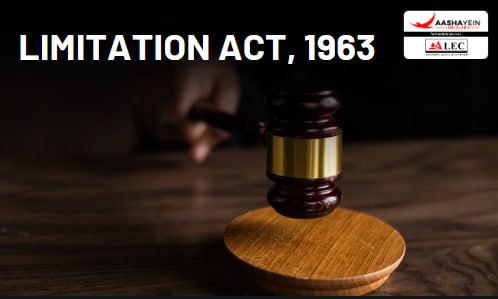Protection Against Unlawful Dispossession
Section 6 of the Specific Relief Act 1963 provides that if someone is removed from immovable property without their consent and not following the legal process, they have the right to file a suit to recover possession of the property. This right applies even if the person filing the suit does not hold ownership or another title to the property; possession alone is sufficient to claim recovery. Additionally, this right extends to anyone who was in possession through them or claims under them.
You can also read the latest judgment by visiting [Latest Judgment].
For more information, visit [Aashayein Enquiry Section]
Time Limit and Restrictions
There are some limits to filing such a suit. First, the claim must be filed within six months from the date of dispossession. Second, such suits cannot be brought against the Government.
No Appeals or Reviews Allowed
Any decision or decree made in such a suit cannot be challenged through an appeal or reviewed under this Section. The ruling made by the court is final in these matters.
Right to Prove Ownership
This Section does not prevent anyone from filing a separate suit to prove ownership of the property and recover possession based on their title. It simply provides an immediate remedy for dispossession without addressing ownership rights.
Essential Elements of Section 6
Section 6 of the Specific Relief Act outlines the key conditions for recovering possession of immovable property:
- Valid Possession: At the time of dispossession, the plaintiff must have lawful possession of the property.
- Non-Consensual Dispossession: The plaintiff must have been dispossessed of the immovable property without their consent.
- Dispossession Not in Due Course of Law: The act of dispossession must not have been carried out through legal procedures.
- Right to Recover Possession: If the plaintiff's possession was valid and they were dispossessed unlawfully, they can recover possession of the specific immovable property, even if the defendant claims title to the property.
- Time Limit for Filing Suit: The lawsuit must be filed within six months of the date of dispossession.
- Restriction Against Government: Section 6 prohibits filing a suit to recover possession against the government.
Additionally, no appeal can be made in the appellate court, and review petitions are not allowed.
Who Can File a Suit?
Before the 2018 amendment, Section 6 allowed any person forcibly dispossessed, or someone claiming through them (such as tenants or mortgagees), to file a lawsuit. However, the property owner, their agent, or an authorized representative could not file a suit to recover possession if a tenant or lessee was unlawfully dispossessed.
The Specific Relief (Amendment) Act, 2018 introduced a significant change by granting title holders, their agents, or authorized representatives the right to file suits for recovering possession. This right now mirrors the earlier protection available to those deriving possession through them.
Landmark Cases
- East India Hotels Ltd. v. Syndicate Bank (1992): Section 6 aims to prevent the use of force and unlawful dispossession.
- Yeshwant v. Jagdish (1968): “Due course of law” means that a person should have the opportunity to be heard, present evidence, and defend their rights before any judgment affecting their property, liberty, or life is pronounced.
- Mahabir Prasad Jain v. Ganga Singh (1999): The Supreme Court emphasized that equitable relief under the Act is available only to those who approach the court with “clean hands.”
- K.K. Verma v. Union of India (1954): Legal possession exists even without actual possession or rightful origin. For instance, a trespasser who is allowed to remain on the property unchallenged by the owner may gain possession under Section 6. Similarly, a tenant’s possession after tenancy termination is considered juridical possession.
Recent Case: Katta Sujatha Reddy v. Siddamsetty Infra Projects (P) Ltd. (2022 SCC OnLine SC 1079)
The Supreme Court recently ruled that the 2018 amendment to the Specific Relief Act applies only prospectively. This means it does not affect transactions that occurred before the amendment came into force.
Concluding Remarks
Section 6 of the Specific Relief Act, 1963, sets out essential rules for addressing the unlawful dispossession of immovable property. It emphasizes that possession, not ownership, is the primary concern under this section. To succeed, the plaintiff must prove that they were dispossessed without their consent and outside legal procedures. The law protects possession and allows the plaintiff or those claiming through them to recover the property, provided there was no voluntary transfer or consent involved. By focusing solely on possession and disregarding title disputes, Section 6 ensures that individuals cannot be forcibly dispossessed without proper legal recourse.

